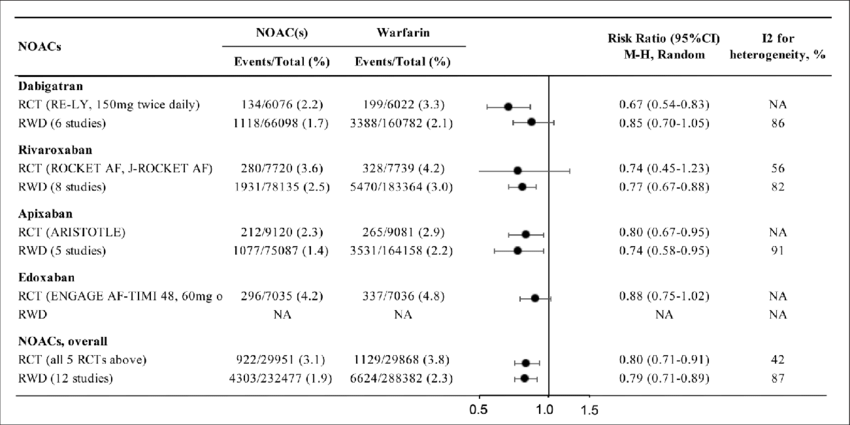
One of the best foods to lower blood pressure is berries. These delicious, nutrient-rich fruits are packed with antioxidants, vitamins, and minerals. A cup of berries daily can help lower blood pressure, and keep your arteries healthy and flexible. Berry juice is not recommended to people with high blood pressure, but it's worth a try. Allicin is a natural antifungal chemical found in kiwis that can be used to treat a wide range of diseases.
Leafy greens can also be good for your overall health. They are high in nutrients and have been associated with lower blood pressure. They are good for your diet. Consider substituting romaine with spinach or adding them to your main meal. It is a great way to lower blood pressure. The more leafy greens you eat, the lower your risk of high blood pressure.

Low blood pressure can be achieved by eating green vegetables and fruits. These rich in magnesium, potassium, and fibre are excellent sources of these nutrients. Leafy greens such as spinach, broccoli and romaine lettuce are also good options. Whole potatoes are also great for lowering your BP and can be eaten with the skin on. Don't forget to have a piece of fruit with each meal.
Leafy greens are also great for lowering your blood pressure. They are high in vitamins A, C, as well as beta-carotene. For a boost to your overall health, you can substitute romaine for leafy greens. You can also add them to main dishes. You can even use them to make smoothies. These foods are good news for your heart. They also help lower blood pressure. They are also great to your skin.
Leafy greens are great for your health. These greens are high in vitamin A, vitamin B, and fiber. These foods can lower blood pressure and reduce your chance of suffering from stroke or heart disease. The best way to reduce the risk of developing this disease is to eat more leafy greens. It's easy to sneak spinach into your meals and enjoy the benefits of a healthy body. Blend smoothies with leafy greens, and you can add them to your favorite recipes.

Your blood pressure may be lower if you eat leafy greens. Their high levels of nutrients have been linked with a lower chance of developing chronic diseases. People with high blood pressure need to be aware of the benefits and incorporate them into their daily lives. Low in salt and fibre are the best foods for lowering blood pressure. These nutrients are the best way to lower blood pressure.
FAQ
How to measure bodyfat?
The best way to measure body fat is with a Body Fat Analyzer. These devices are used to measure body fat for people who want weight loss.
Why does our weight change as we get older?
How do you determine if your bodyweight is changing?
Weight loss occurs when there is less fat than muscle mass. This means that daily calories should be less than daily energy. Reduced activity is the leading cause of weight gain. Other factors include stress, illness and pregnancy. If there is more body fat than muscle mass, then weight gain can occur. This happens when people consume more calories than they burn during the day. The most common causes are overeating, increased activity, hormonal changes, and excessive calories.
Our bodies lose weight because we eat fewer calories than we burn. When we exercise regularly, we increase our metabolism rate which burns off more calories throughout the day. This doesn't necessarily mean we will lose weight. What matters is whether we are losing fat or building muscle. If we are burning more calories than what we eat, then we will lose weight. However, if we consume more calories than we burn, we end up storing them as extra fat.
As we age, our ability to move around is slower and we are less mobile. We also tend to consume less food than when we were younger. This is why we tend to gain weight. On the other hand, we have more muscle mass and look larger than we actually are.
There's no way to tell how much weight you've lost unless you weigh yourself every week. There are many ways you can measure your weight. You can also measure your waist, hips or thighs. Some people prefer using bathroom scales and others prefer tape measure.
To track your progress, weigh yourself once a week. Measure your waistline once per month. You can also take photos of your self every few months to track how far you've come.
You can also find out how much you weigh by looking up your height and weight online. If you are 5'10" tall, and you weigh 180 lbs, then you would probably weigh 180 lbs.
How does an antibiotic work?
Antibiotics are drugs that destroy harmful bacteria. Antibiotics can be used to treat bacterial infection. There are many types of antibiotics. Some can be taken orally while others are injected. Others are topically applied.
People who have been exposed may be prescribed antibiotics. An oral antibiotic might be prescribed to someone who has been exposed to chicken pox. This will prevent the spread of shingles. For those with strep-thorphritis, an injection of penicillin could be administered to prevent them from getting pneumonia.
If antibiotics are to be administered to children, they must be prescribed by a doctor. Children are at greater risk than adults for developing serious side effects from taking antibiotics.
Diarrhea is one of the most common side effects of antibiotics. Other side effects possible include dizziness, nausea, vomiting, stomach cramps, dizziness and allergic reactions. Most of these symptoms disappear after the treatment is completed.
Do I need to count calories?
You might be asking "What is the best diet?" or "is counting calories necessary?" Well, the answer depends on several factors including your current health status, your personal goals, your preferences, and your overall lifestyle.
The Best Diet For Me: Which One Is Right?
My current health status, personal goals, preferences, and overall lifestyle all play a role in choosing the right diet. There are many diets available, some good and others not so good. Some diets work better than others. What can I do to make the right choice? How do I make the right decision?
These are the questions this article will answer. This article begins with a brief overview of the various types of diets that are available today. Then we will discuss the pros & cons of each kind of diet. Finally, we'll discuss which one is best.
Let's first take a look at different diets.
Diet Types
There are three main types: low-fat, high-protein, or ketogenic. Let's briefly discuss them below.
Low Fat Diets
A low-fat diet is one that limits the intake of fats. This is done through reducing the intake of saturated fats (butter, cream cheese, etc.) These fats can be replaced with unsaturated fats like avocados and olive oil. For those looking to lose weight quickly, a low-fat diet is often recommended. This type of diet can lead to constipation and heartburn as well as indigestion. If a person doesn’t receive enough vitamins from their foods, this can lead to vitamin deficiency.
High Protein Diets
High-protein diets limit carbohydrates and favor proteins. These diets often have higher levels of protein than most other diets. These diets are meant to increase muscle mass, and burn more calories. One problem is that they might not be sufficient to provide regular nutrition. They can also be very restrictive so they may not be suitable for everyone.
Ketogenic Diets
Ketogenic diets can also be known as keto diets. They are high fat and moderately carbohydrate and protein-rich. Athletes and bodybuilders use them because they allow them more time and harder training without feeling fatigued. But, they require strict adherence to avoid negative side effects like nausea, headaches, and fatigue.
How often should i exercise?
For a healthy lifestyle, exercise is vital. However, there isn't a set amount of time you must spend working out. Finding something you enjoy is key. Stick with it.
If you work out three times a week, then aim to complete 20-30 minutes of moderate intensity physical activity. Moderate intensity means that your muscles will continue to work hard even after you finish. This type is good for burning around 300 calories.
For those who prefer to walk, you can go for 10-minute walks four times a week. Walking is low impact and easy on your joints.
Jogging for 15 minutes three days a week is a good option if you prefer to run. Running can help you burn calories and to tone your muscles.
Begin slowly if your are not used to working out. Begin by only doing 5 minutes of cardio five times per week. Gradually increase the duration until you reach your goal.
Supplements and herbs can improve immunity
To boost immunity function, herbs and natural remedies are available. There are many natural remedies that can boost immunity, including echinacea (oregano), ginger, ginkgo biloba and vitamin C.
These herbs should not be considered as a substitute for conventional medical treatment. Side effects may include nausea, diarrhea, stomach cramps (dizziness), headaches, dizziness and stomach cramps.
What can I do to lower my blood pressure?
The first thing you need to do is find out what causes high blood pressure. Next, you must determine the cause and take steps to decrease it. You can do this by eating less salt, losing weight, or taking medication.
Make sure you're getting enough exercise. Walking can be a good alternative to regular exercise if time is tight.
You should join a gym if you are unhappy with your exercise routine. It's likely that you will want to join a gym with other people who are working towards the same goals as you. It's easier to stick to an exercise routine when you know someone else is going to see you at the gym.
Statistics
- This article received 11 testimonials and 86% of readers who voted found it helpful, earning it our reader-approved status. (wikihow.com)
- The Dietary Guidelines for Americans recommend keeping added sugar intake below 10% of your daily calorie intake, while the World Health Organization recommends slashing added sugars to 5% or less of your daily calories for optimal health (59Trusted (healthline.com)
- Extra virgin olive oil may benefit heart health, as people who consume it have a lower risk for dying from heart attacks and strokes according to some evidence (57Trusted Source (healthline.com)
- In both adults and children, the intake of free sugars should be reduced to less than 10% of total energy intake. (who.int)
External Links
How To
What does the term "vitamins" mean?
Vitamins can be described as organic compounds found in food. Vitamins allow us to absorb nutrients from food. Vitamins cannot come from the body so food must provide them.
There are two types vitamins: water soluble or fat soluble. Water-soluble vitamins dissolve easily when they are dissolved in water. Some examples include vitamin C,B1 and B2 vitamins (thiamine), B2 and riboflavin, B3 and B6 vitamins (niacin), folic acids, biotin, pantothenic acids, and cholesterol. The liver and fatty tissues are home to fat-soluble vitamins. These include vitamin D, E and K, as well as beta carotene.
Vitamins are classified according to their biological activity. There are eight major categories of vitamins.
-
A - Vital for normal growth and maintaining good health.
-
C - essential for nerve function and energy generation.
-
D - essential for healthy bones, teeth, and gums.
-
E is required for good vision and reproduction.
-
K - Essential for healthy muscles and nerves.
-
P - essential for strong bones, teeth and tendons
-
Q - aids digestion and absorption of iron.
-
R – Required for the formation of red blood vessels.
The recommended daily allowance (RDA) of vitamins varies depending on age, gender, and physical condition. The U.S. Food and Drug Administration, (FDA), sets the RDA value.
For adults over 19 years, the RDA is 400 mg per day for vitamin A. However, pregnant women need 600 micrograms per day because it is important for fetal development. Children ages 1-8 require 900 micrograms per day. Children under 1 year old require 700 micrograms daily, while infants over one year old need 500 micrograms every day. This decreases between 9 and 12 months.
Children ages 1-18years who are obese need 800 micrograms per day while those who are overweight need 1000 micrograms per day and children who are underweight need 1200 micrograms per day to meet their nutritional needs.
2200 mg of vitamin A per day is required for children aged 4-8 who have been diagnosed by anemia.
2000 micrograms are required daily for good health in adults over 50. Breastfeeding or pregnant women require 3000 micrograms per daily due to higher nutrient demands.
Adults over 70 years of age need 1500 micrograms per day since they lose about 10% of their muscle mass each decade.
Women who have been pregnant or are lactating require more than the RDA. Pregnant women require 4000 micrograms daily during pregnancy, and 2500 micrograms every day after birth. Breastfeeding moms need 5000 micrograms each day when breastmilk production occurs.